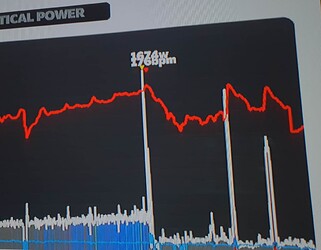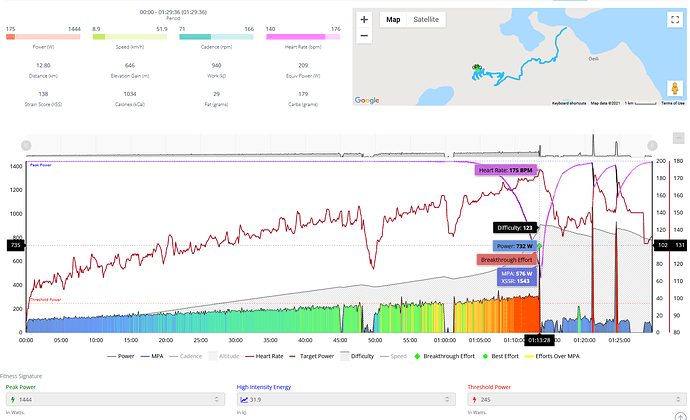Thanks again for the reply Wes!
I think it was likely user error with HRV Logger. I tried out a few different apps and settled on FatMaxxer (GitHub - IanPeake/FatMaxxer: Android Project to find FatMax in real time with a Polar H10), then had a look at the Zwift DFA alpha1 ramp test recommended by aiendurance.com but noticed that it went up in 10W/minute increments. I recall Bruce Rogers possibly saying something about spending a few minutes at particular power levels so just set Zwift on a 1hr warmup ramp from 120-250W, with it going up in smaller intervals. DFA alpha1 ended up hovering above/below 0.75 at 188-190W, then occasionally went above again a few times until around 220W. I’ve gotten alright at noticing when I start feeling lactate and I hadn’t felt any until around 188W, so I’ll use that as the lower bound and do repeated tests over the next month.
When the ramp test ended @ 250W I decided to restart it at 250W and turn it into a kind of makeshift MPA drawdown workout and see where I could get to. Lactate didn’t seem to be too much of an issue and my HR only shot up once I crossed 280W. I feel like I could hold 240-280W for an hour so I suspect that’s probably around where my FTP is. I’ll try the proper Zwift FTP test in 2 weeks.
I started overheating after ~310W so decided to call it quits probably earlier than I should have (we’re going into summer here in NZ and I’ve started trying to heat train without a fan).
Out of curiosity from this post MPA calculations (@skinner_ron) I decided to test if I could hit a peak-power sprint 80 minutes into the workout after already doing the ramp test. Anecdotally, it turns out that I can. I hit 1674W according to Zwift (I saw > 1500 pop up on the screen) but I recall that Xert strips out spikes above peak power if they’re under 5 seconds long. Damn, I was hoping for a peak power breakthrough.
I also decided to see if I could match my 10-second sprint power (~800W average). At least in my limited experience I think that @xertedbrain’s comment about hitting peak power is accurate (although admittedly 4 hours is longer than 90 minutes, I’m a complete beginner so don’t qualify as anywhere near a professional).
Here’s the graph of the ride.
Hopefully that shows that an MPA effort is still possible for an untrained person (although I do really wish it showed the 1674W peak, I’ll have to break that another time when fresh)
I know it’s just one person’s data but I found it interesting to see how relatively accurate MPA is at least for sprints.
These are my metrics after that ride. I feel like they’re far more accurate than they were before.
I’m looking forward to learning some really cool things about my training in the upcoming months. What an awesome platform!




